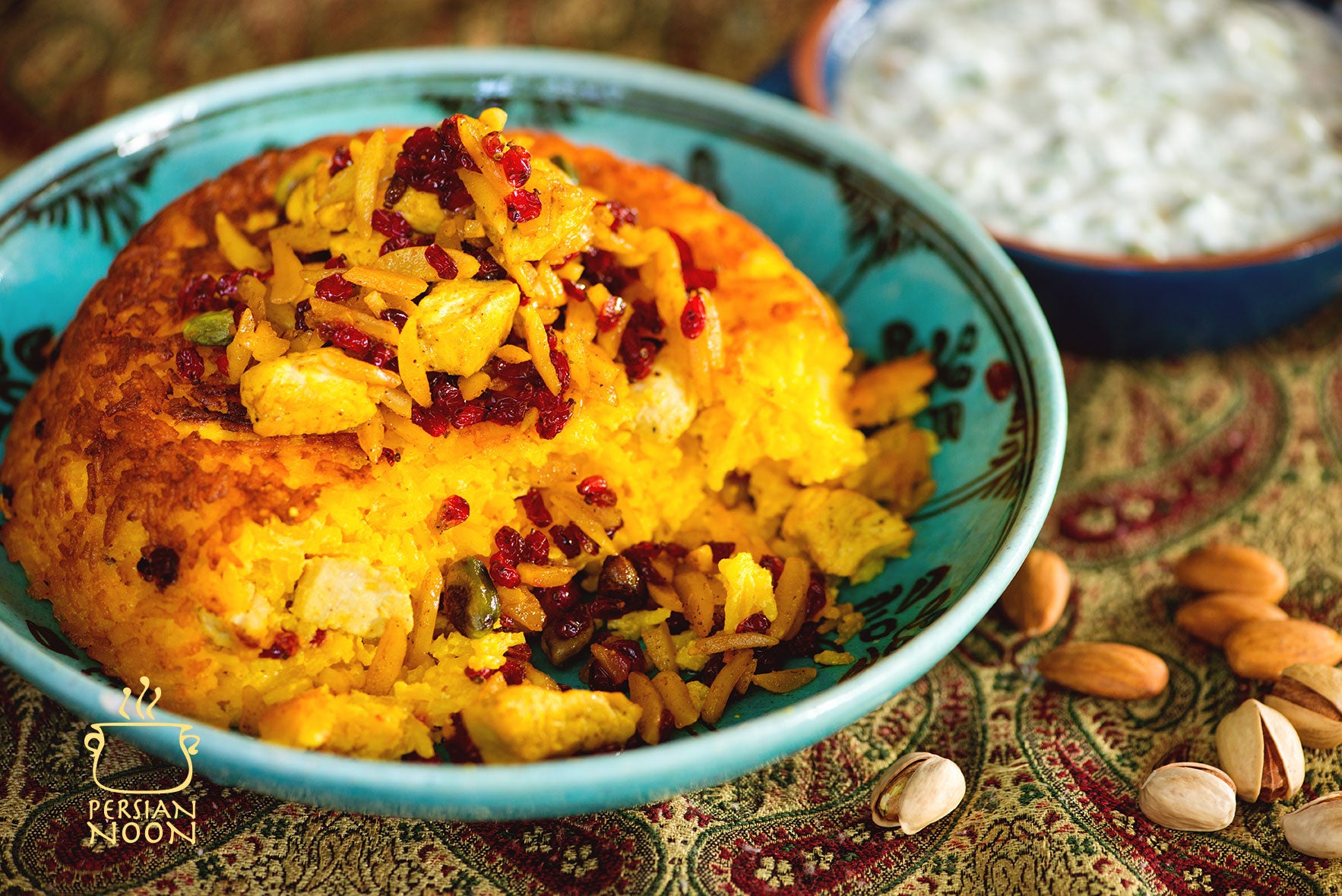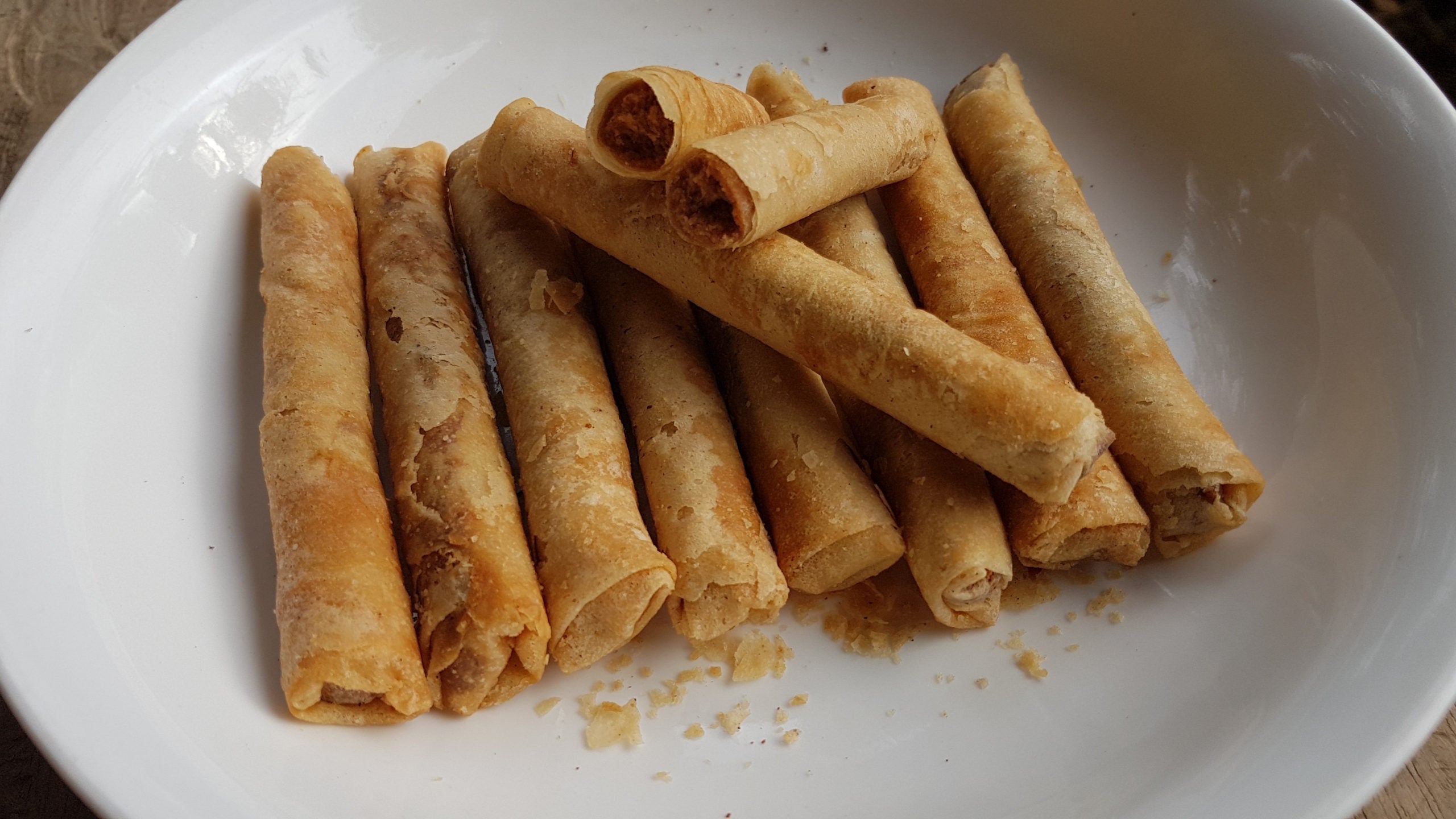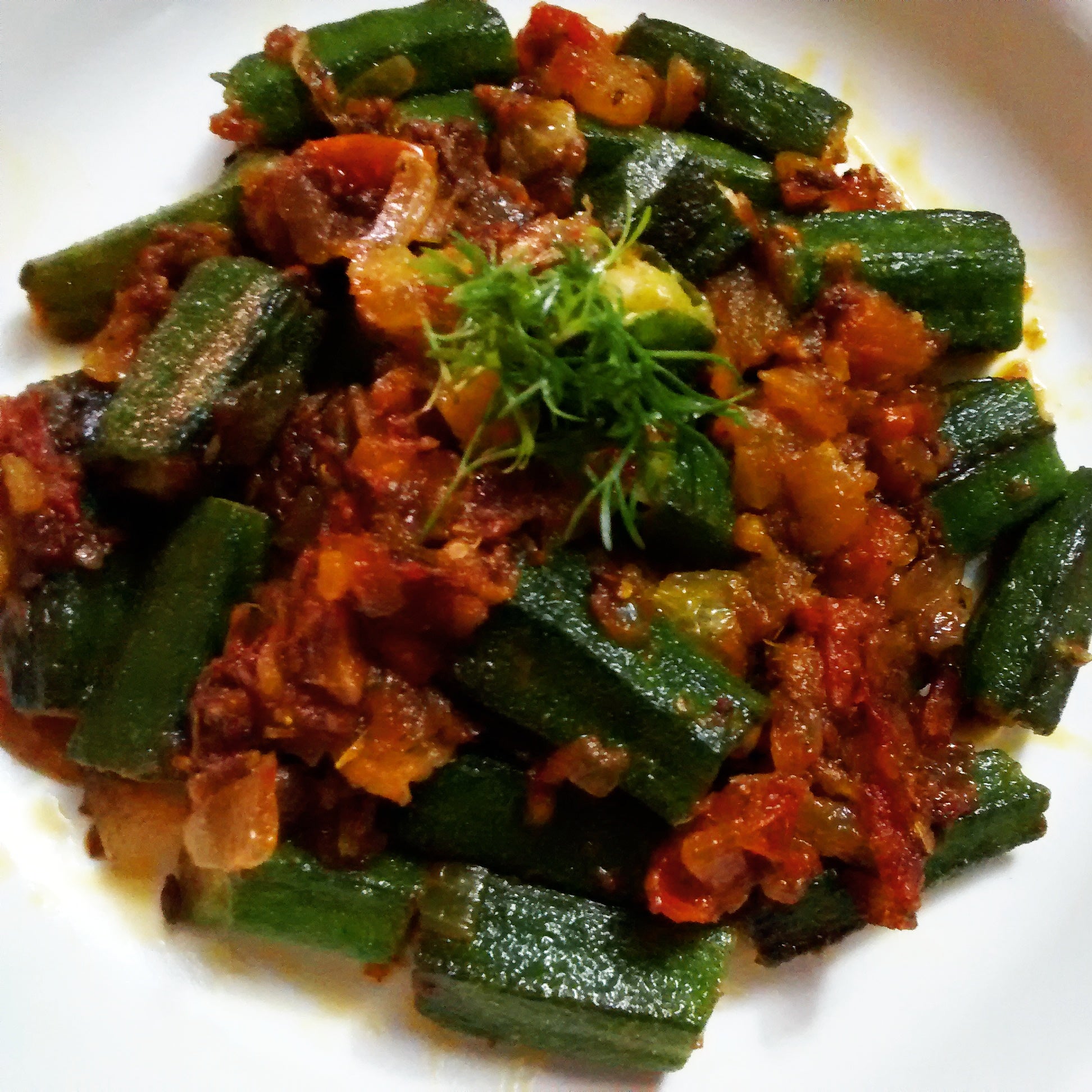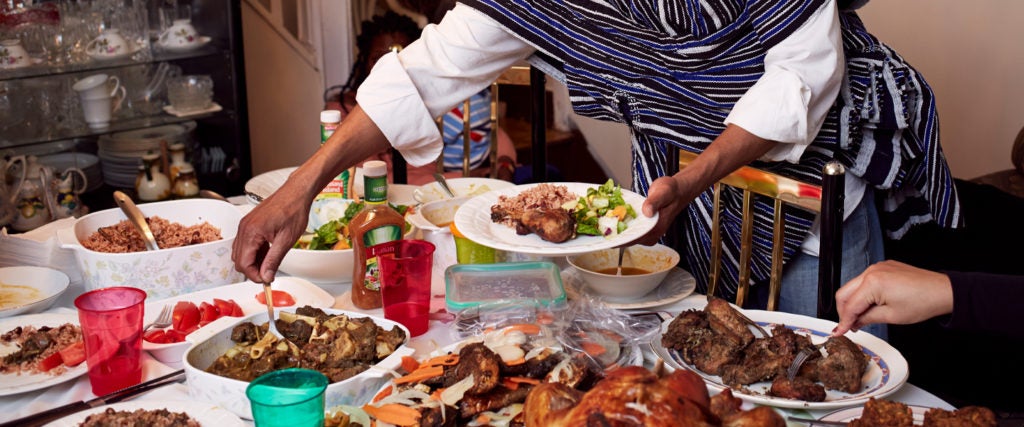My dad tells me it took a few years for he, my uncle and my grandparents to absorb the tradition of Thanksgiving once they immigrated to the U.S. from Iran. He doesn’t use the word “absorb” at all, in fact — he describes it as something they had to eventually “take in,” as though for them, this part of their American identity was in part a concession as well as a release. Either way, to truly become Americans, they had to make room on their table for turkey.
First, however, they had to digest the realities of living in exile. “We didn’t think we were here to stay,” he says of their arrival to the U.S. on the eve of the 1979 Iranian Revolution. After that, and only after their home in Tehran began to fray like an old memory, did the urge to roast a turkey on the fourth Thursday of November begin to gnaw against their door. It was a friend of my grandfather’s who called first. “They’d been here longer than us,” my dad tells me, “and I think they invited us over for Thanksgiving.”
Once my mom and dad had my brother and I, Thanksgiving developed into a more formal American celebration. They knew what all immigrant parents come to eventually know — if you want your kids to feel as though America is their home, you have to celebrate the most American of holidays (it is, arguably, more of a national holiday than the Fourth of July).
But even then, just as it remains now, that turkey — sitting atop an ornate white-linen tablecloth which, along with some clothes and photo albums, made the nearly 8,000 mile journey to L.A. — is a sort of gastronomic détente between two nations that have been at war for the better part of the last half century. It’s a geopolitical reality that’s particularly jarring once the smells of the old world begin to mingle with that of the new.
There is the turkey, of course — this bit of Thanksgiving tradition is nearly impossible to insurrect. But like a lone American battleship floating in international waters, the turkey is flanked on one side by a cake of rice coated in egg yolk and yogurt, then scorched in saffron, known as Tahchin. On the other, there is sure to be a stew of some kind, its colors aggressive and deep.

In the remaining space, there are other American classics like mashed potatoes, macaroni and cheese and a brand of stuffing that occasionally lends itself to their Persian pedigree. My mom’s brother has, on more than one occasion, stuffed the turkey with dates and raisins the color of pistachios. I promise you he’s not trying to make a Persian-tasting turkey — he’s just cooking turkey. The addition of cumin punctuates this intercultural marriage of flavors between two traditions, a convergence of two worlds so natural it hardly feels planned.
Our Thanksgiving spread, as Bon Appétit research director Joseph Hernandez puts it, has never been a “Norman Rockwell painting.” Instead, it’s a smattering of foods and flavors, histories fused with futures that is on par with the immigrant Thanksgiving experience. “I knew right away that I didn’t really like turkey, and I didn’t really like canned or jarred gravy because my mom didn’t understand what gravy was,” says Hernandez, who immigrated to the U.S. from the Philippines at age five with his mom and his brother, in 1990.
Hernandez tells me that their first few Thanksgivings were standard. “I definitely recall more of a sense of like, ‘Okay, well, this is what Americans do on Thanksgiving,’ so it was much more cut-and-dry for a few years,” he says. But later, the underlying theme of this most American holiday clicked. “Oh, it’s celebration foods,” he recalls of his mom’s realization. “We should be making things that make us happy and understanding that this spread is about gratitude.”
Krishnendu Ray, an author and associate professor of food studies at NYU, tells me that although he views Thanksgiving as a nationalistic holiday, “in some funny ways, if you’re part of a Northern Hemisphere civilization, almost anywhere in the world, you would have some version of a Thanksgiving about this time of the year.” “This is when the harvest comes in, depending on where people live,” he continues. “Hindus in India just went through the Diwali festival,” adding that like Thanksgiving, those celebrations are in part also harvest festivals. “The analogy and the timing of Thanksgiving is perfect for many immigrants,” says Ray. “I would say perfectly portable from there to here.”
My excuse is because my immigrant family had no idea how to make thanksgiving food. Our Mac n cheese was pretty much sopa con queso. Plus my dad REQUIRED beans & tortillas at every meal. Including w spaghetti ? LOL https://t.co/uy4WEnE0TY
— Brisa (@Brrisah) November 10, 2020
That realization, that Thanksgiving is merely a celebration with American branding, Hernandez recalls, marked a definite shift in what foods his family would prepare. “We’ll have the turkey — even though nobody in my family really likes turkey — and we’ll have stuffing, mashed potatoes, rolls and cranberry sauce, but then, the stuff that I always gravitated toward was more Filipino dishes.”
These dishes, he says, include lumpia — “which are Filipino egg rolls,” says Hernandez — “and pancit luglug, which is a stir-fried noodle.” In addition, there’s a tamarind soup called Sinigang that would sometimes make its way to the table, just depending on people’s moods. “It’s not a traditional celebration food, but it’s something that my family likes to eat,” adds Hernandez. Really, says Hernandez, for his mom, as far as he can tell (though he also admits they’ve not discussed this), “Thanksgiving wasn’t so much about assimilating, but it was about the experience. ‘We should experience this as other Americans experience this.’”

Stemming mainly from the “Eastern and Northern Indian repertoire,” Ray’s Thanksgiving spread relies heavily on highly spiced meats. He doesn’t like turkey, but if he’s forced to cook it, it will be “highly spiced” with very typical Thai green chilies, and come with a side of “yogurt cucumber raita.” “Of course, mashed potatoes, we might veer off in a very Indian direction, which is with mustard oil, raw onions and green chilies,” he says.
Even then, alongside his take on mashed potatoes with a twist, Ray admits “there will be one for my son, which will be, let’s say butter or sour cream and dill.” This inclusion of mashed potatoes prepared the traditional way is, according to Ray, very common among immigrant moms and dads whose kids are born in the U.S. In Ray’s book, The Migrants Table: Meals and Memories, which examines “the changing food habits of Bengali immigrants to the United States as they deal with the tension between their nostalgia for home and their desire to escape from its confinements,” he studied 126 households and found that immigrant moms and dads have a really difficult time with Thanksgiving. “But they will cook a turkey even though it’s not something they want to do, because the kids have to go back to school and talk about turkey,” he says.
In other words, even amidst the customized Thanksgiving food experience there is, at least for immigrant parents, a certain pressure not to stray too far from that which helps their child feel American. “[The kids] feel really weird and out of line if they don’t,” he says. “So that was a really important part of the ritual, and quickly, most families [I interviewed] in a couple of years would have some version of an analog to a turkey dinner.” This is the monolith of Thanksgiving hard at work.
But there is another side of it too, according to Fazia Rizvi, an actor and writer whose father is from India and whose mother is from Finland. She tells me that for her, Thanksgiving is the proverbial “melting pot” in action. “Because of the two different — very different — cultures my parents come from, Thanksgiving, I think, became our family holiday,” she tells me. While many of the other “American” holidays that are on the calendar can be seen as religious or patriotic, Thanksgiving was just all about food. “The food on the table was a combination of traditional turkey and stuffing and yams and a pecan pie, which is more traditional in Texas than an apple pie or pumpkin pie,” says Rizvi. “But we would insert in some of the vegetables, which was Bhindi Masala, an okra dish, with Indian spices. Some years there might be Biryani next to all of that.”

As a kid, Rizvi didn’t really know what was typically considered a traditional Thanksgiving meal. “You look at television, the characters putting a Thanksgiving meal on the table, the only thing that ever seemed to matter was the turkey. You never really knew what was in the other dishes.” The traditions of a classic American Thanksgiving were more important for her dad, though. “Having traditional turkey and having that correct was a part of having this American meal and sharing the shared American experience,” she says. “That was very important to him. I can tell that he was very happy and proud to be here. He was very glowing about the country he’d adopted.”
And yet, agrees Ray, even amidst the excitement of a new American identity, it’s rare for immigrants to adopt traditional American meals without bringing their personal history to the table. “One of the themes that’s important to them is a sense of cultural autonomy — not to become too American,” he says. His work, for instance, shows that immigrants would quickly adopt an American breakfast of cereal and milk or toast and coffee, but dinner would be “quite substantially, almost aggressively, not American.” It’s the same reason, he says, that immigrants don’t change their religion in most cases, but will pick up a new language. “Immigrants’ attire changes, but there’s also a retention of their own cultural values,” he adds, expanding that there is a sense shared by immigrants that you don’t want to become “norm-less Americans.”
The combination of both American classics paired with Indian-inspired dishes on Thanksgiving, Ray continues, is merely an extension of that same delicate dance to preserve their cultural traditions as they pursue the adoption of new ones. “You feed your cultural desire along with your children’s desires, who are American born and raised,” adds Ray.
Hernandez tells me that as an adult, he’s grown even more appreciative of the interwoven flavors of traditionally American dishes and “the ones that remind me of the home that I left.” “I just remember that it’s one of my mom’s favorite dishes,” he says of Pancit Luglug. “I always associate our family holidays around that dish. When it shows up on Thanksgiving, it just adds a little bit more nostalgia to the day.”
Having never been to the country from which my parents originated, for me, there is little to feel nostalgia for there. Instead, the entanglement of two cuisines is a potent reminder that while I am an Iranian-American, I live amongst Persians in America. For a time, this truth was vexing: When I was younger, I wanted only the most traditional Thanksgiving spread. I didn’t want an immigrant’s Thanksgiving — I wanted Thanksgiving to look like that which I saw on TV. Back then, the gastronomic fusion felt like fraud.
But today, unless there’s Tahchin alongside the turkey, I’m not at home.

